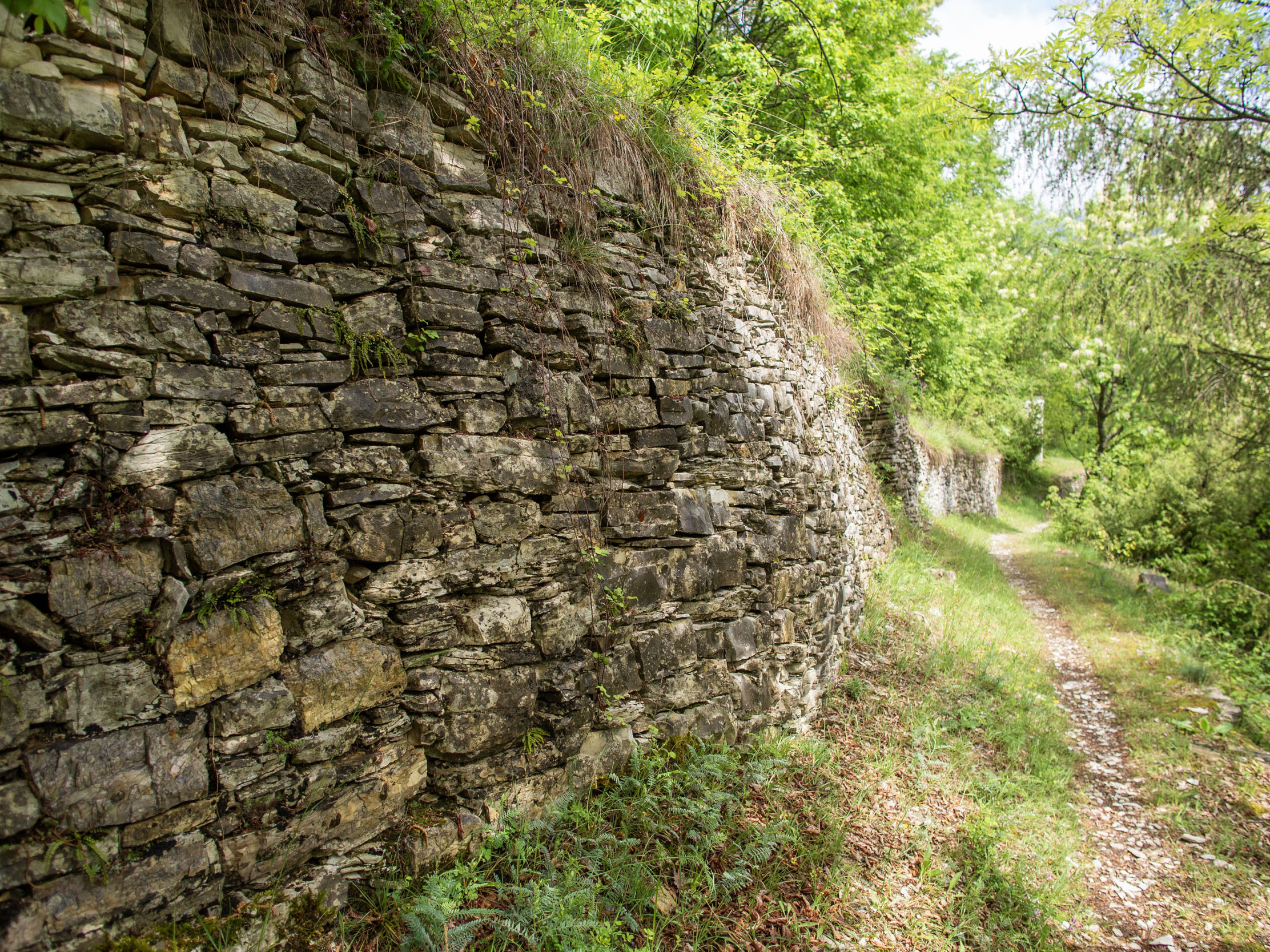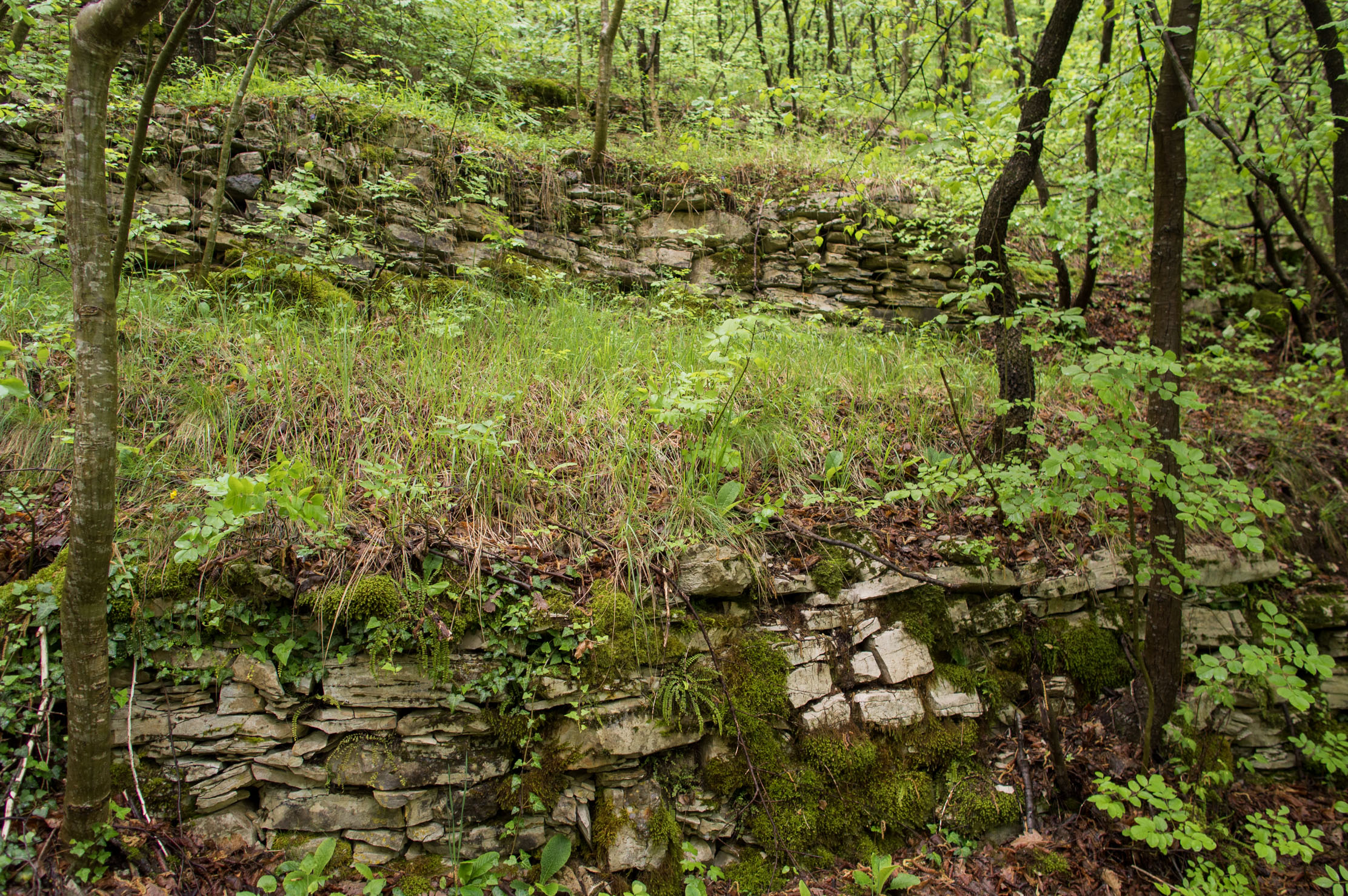Appendix
The Terrain

Incino’s principal feature, unfamiliar to many, is its terraces, called “vanede” in dialect. Built from walls entirely without mortar, these were erected over the last two hundred years to level an extremely steep terrain and permit agriculture to exist, and even thrive, where it would be otherwise impossible.
These terraces were never built in isolation—they were were part of a broader context encompassing an entire agricultural area, and they filled all, or almost all, of the land surrounding the village. From the Pala della Renga, a line of vanede rose continuously to Prai, while from Casere they went well beyond Martinati and Incino to the hamlet of Tanisoi.

This terracing is an elaborate system with a well-established structure, including paths between farms, steps for access (“scalèr” in dialect), and numerous wells and cisterns to collect water near valleys and streams, ensuring constant capacity. There were small buildings (“casere,” or mountain houses) equipped with stables (“casòt”) and niches, always built from drystone, that were used as shelter from the weather and as storage for farming equipment. Stones were extracted near vaneda building sites largely through small quarries or rock clearance from the land. The length of vanede would vary with the morphology of the terrain, and their height would range from around 1 to 3 meters.
All of this still exists today, but in a completely different context. The vertical collapse of Incino’s population has brought the number of permanent residents well below 20, and the few who remain are aging. After 1960 (approximately) agricultural activity was abandoned, at first slowly, and then entirely—along with the maintenance of the walls, leading to their inevitable degradation and then collapse—though many, despite total neglect, still remain in good order.

Now there are vines and vegetable gardens only in a few plots around the village, south of Prai, and near Casere. A simple look around reveals the current reality: most of Incino’s land is covered by brush, and by increasingly chaotic and disordered vegetation that will end up suffocating the village. The work of our forefathers will be destroyed irrevocably. In two hundred years of enormous labor they had seized the land from nature and reconstructed it—once, the vine, the potato, and the bean were the masters; now what dominates is the hornbeam, the durmast, and the shrub.